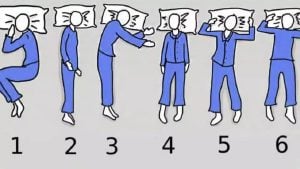According to the Food Combining philosophy, combinations of certain foods go well together. Followers of the food combining diet change the way of eating to lose weight. It is also good to know that improper food combining may lead to negative digestive effects on health.
What Is a Food Combining Diet?
Food combining refers to a nutritional approach that recommends definite combinations of foods as the key to good health and weight loss. It also helps to maintain body balance. Generally, it suggests not mixing carbohydrate-rich foods with protein-rich foods under the same meal. This particular term is also called trophology.
Background Knowledge
This type of diet is not a new weight-loss craze. The principles of food combining first emerged in ancient Ayurvedic medicine. Still, they became extensively popularized during the 1920s when medical professional William Hay portrayed his interpretation of the combination diet under the term trophology, i.e., the science of food combining. According to The Hay Diet, food was separated into three groups: alkaline, acid, and neutral. He suggested not mixing acid foods (meat or any protein-rich foods) with alkaline foods (starchy food and carbohydrates ).
It’s important to understand each food combining approach’s reasoning and concentrate on a balanced diet to maximize your nutrition. Supporters confess that merely mixing some foods doesn’t help in digestion and prevents weight gain to know the answers in detail.
Keeping a few principles in mind, you may experiment with food combining.
Here is a list of some specific food combining or pairing foods to boost your digestion and gain more energy.
- Don’t combine macronutrients (protein, carbs, and fat),
- Don’t eat some food together (starches + protein, or fat + protein). As eating certain combined foods together make hindrance indigestion.
- Eat fruits only on an empty stomach.
- Don’t combine starches with acidic foods.
- Don’t mix different types of protein.
- Consume milk on an empty stomach.
- Eat Sugar alone.
- Don’t combine fruits and vegetables.
Beliefs Behind Food Combining Diet
The food combining rules are mostly derived from two beliefs. Followers of food-combining diets believe that these rules are necessary for proper health and digestion.
First, different foods digest at different speeds. So, pairing a fast-digesting food with slow-digesting food is results in an obstacle in your digestive tract, leading to negative digestive consequences.
The second one is that if two foods want different pH levels, the body can’t digest both the food simultaneously, which results in acidity in your bowel.
Food Combinations Good For Health
- Protein + Non-Starchy Vegetables
- Nuts And Seeds + Acid Fruits
- Starchy Veggies + Non-Starchy Veggies
- Protein & Fats + Non-Starchy Veggies
Foods That Pair With Everything
- Cucumber
- Leafy Green Vegetables (Spinach, Kale, Lettuces, Beet Greens)
- Avocado
- Lemons & Lime
- Tomatoes
- Summer Squash
- Wheatgrass
Vegans must not be concerned about eating pairing certain foods.
Another food combining question often asked: If vegans should eat certain foods to get “complete” proteins? No—if you eat a balanced diet with enough protein and calories.
Usually, our liver keeps storing various essential amino acids for the whole day for later use. The amino acids together effectively repair protein tissues in the body. Rather than going for definite combos, the best way is to eat a large variant of plant foods daily, toa broad range of values of amino acids and other nutrients.
Is Food Combining Diet a fact or fiction?
The rules of food combining don’t provide many valid reasons for its efficacy.
First, our body releases the enzymes needed to break down and digest a meal, irrespective of what we have consumed.
Supporters claim that not following food combining leads to weight gain. But the truth is poorly digested food results in malabsorption, which leads to diarrhoea, and weight loss.
Many single foods contain combinations of macros, like nuts, a source of fats and protein. On the other hand, lentils provide carbohydrates and protein. If the principles were true, your body couldn’t well digest these foods anytime.
Moreover, the inhabitants of The Blue Zones of World, where people live the longest and healthiest lives, do not observe food. Here, a high percentage of citizens live to be 90 and above, with low rates of obesity and other diseases.
Certain pairs of food directly challenge the rules of food combining helps improve nutrient absorption.
Scientists found no indicative difference in terms of weight loss, which followed food combining guidelines.
Some food pairing works.
Some people refer to food combining, like eating foods in duos, improves certain nutrients’ absorption rate. For example, consuming vitamin C rich foods boosts non-heme iron absorption by six times. For this, food combinations, like kale (iron) with oranges (Vit C), black beans (iron) with red bell pepper (Vit C), and dark chocolate (iron) with strawberries (Vit C), are encouraged to get the benefits of dual nutrients.
Another good combo is fat with produce (fruit or vegetable). It is seen that fat significantly increases the absorption of antioxidants and fat-soluble vitamins in fruits and vegetables. According to another research, it is found that essentially a high level of carotenoid antioxidants was absorbed from salads dressed with full-fat dressing.
Thus, it’s wise not to strictly follow one of the key principles of food combining that focuses on having fruit alone. Combining fruit with healthy fat-rich foods like nuts, seeds, olives, and avocado will provide you with more nutrition. It will also better regularise your insulin and blood sugar levels.
Final Verdict On Food Combining
Don’t solely focus on principles about foods that should or shouldn’t be consumed together. The best way to ensure getting a broad spectrum of nutrients is to choose whole foods, eat a wide range of foods, and make a proper decision about how much to eat. Following a consistent eating routine like eating 3 to 4 meals daily around the same time can help you gain healthy body weight.
Keep in mind that food combining is not a science-based approach. Moreover, food combining diets would be unmanageable for many people because of its many intricate rules. If you perceive that the food combining diet works for you, then you should continue.














